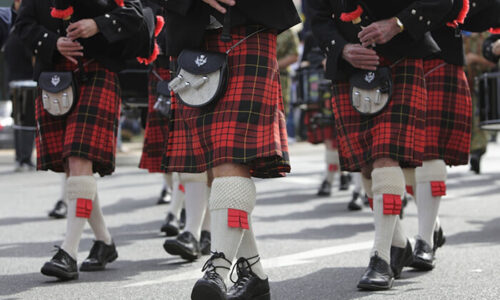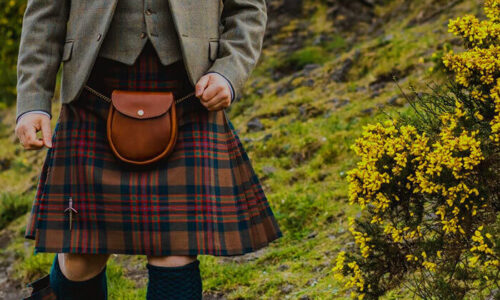Introduction
Kilts, with their iconic tartan patterns and rich history, have captured people’s imaginations far beyond the Scottish Highlands. More than just a piece of clothing, kilts symbolize heritage, pride, and tradition. Whether you’re drawn to kilts because of their cultural significance or their distinctive style, one of the most pressing questions is: how much does a kilt cost? The answer to that question isn’t straightforward, as kilt pricing can vary dramatically depending on various factors, including the material, craftsmanship, brand, and even the purpose for which the kilt is being purchased. From budget-friendly options for casual wear to luxurious handcrafted pieces that reflect a deep connection to tradition, the range of kilts available today can cater to virtually every budget.
Understanding the different factors that influence kilt pricing is essential for making an informed purchase. In this guide, we’ll explore everything from the cultural heritage of kilts, which continues to impact their value today, to the different types of kilts available on the market. We’ll delve into the specifics of what makes a kilt budget-friendly or high-end and provide insights into the best ways to shop for a kilt, whether you’re looking for a second-hand deal or considering splurging on a custom-made masterpiece. By the end of this guide, you’ll have a clear understanding of how much a kilt can cost and what you can expect to get at different price points, helping you find the perfect kilt that fits both your style and budget.
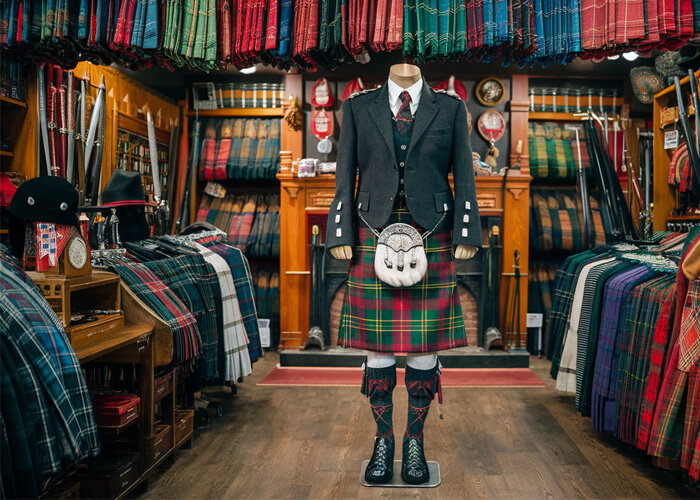
The Kilt’s Cultural Heritage
Historical Significance of the Kilt in Scottish Culture
The kilt is more than just a garment; it is a symbol deeply embedded in Scottish culture and history. The origins of the kilt date back to the 16th century when it was first worn by Scottish Highlanders as a full-length garment known as the “great kilt” or “féileadh mòr.” This versatile piece of clothing, made from woolen cloth and often adorned with a clan’s tartan pattern, served both practical and symbolic purposes. It was a mark of identity, signaling the wearer’s clan affiliation, and also a practical garment that could be used as a blanket during cold nights in the Highlands. The kilt became even more emblematic of Scottish culture during the Jacobite uprisings of the 18th century, where it was worn by Scottish soldiers as a symbol of resistance against British rule. After the failed uprisings, the British government banned the wearing of kilts and tartans in an attempt to suppress Scottish identity, but the kilt survived as a powerful symbol of defiance and national pride.
Today, kilts are worn not only in Scotland but around the world as a celebration of Scottish heritage. They are often seen at cultural events, weddings, and other formal occasions, where they serve as a reminder of Scotland’s rich history and traditions. However, the kilt has also evolved over the centuries, adapting to modern fashion trends and becoming a versatile piece of clothing that can be worn in various settings. The historical significance of the kilt continues to influence its pricing today, with traditional kilts made from high-quality wool and featuring authentic tartans often commanding higher prices than their modern, mass-produced counterparts. Understanding the cultural heritage of the kilt is essential for appreciating the value that a well-crafted kilt can represent.
Modern Adaptations and Their Impact on Pricing
While the kilt remains a powerful symbol of Scottish heritage, it has also evolved into a fashion statement that transcends its traditional roots. In the modern era, kilts have been adapted for a variety of styles and purposes, ranging from casual wear to formal attire. Designers have reimagined the kilt in countless ways, using different materials, patterns, and cuts to create kilts that appeal to a broader audience. For example, casual kilts made from lighter materials like cotton or polyester are now widely available, offering a more affordable and practical option for everyday wear. These modern adaptations have made kilts more accessible to people who may not have a direct connection to Scottish culture but still appreciate the unique style and versatility of the garment.
However, these modern adaptations have also had a significant impact on pricing. While traditional kilts made from high-quality wool and featuring authentic tartans can be quite expensive, modern kilts made from synthetic materials are generally more affordable. The level of craftsmanship involved in creating a kilt also plays a crucial role in determining its price. Handcrafted kilts, which are often made by skilled artisans with years of experience, tend to be more expensive than mass-produced kilts that are churned out in factories. The brand name can also influence the price, with kilts from well-known designers or luxury brands often carrying a premium price tag. Ultimately, the price of a kilt in the modern market can vary widely, depending on the materials, craftsmanship, and brand involved.
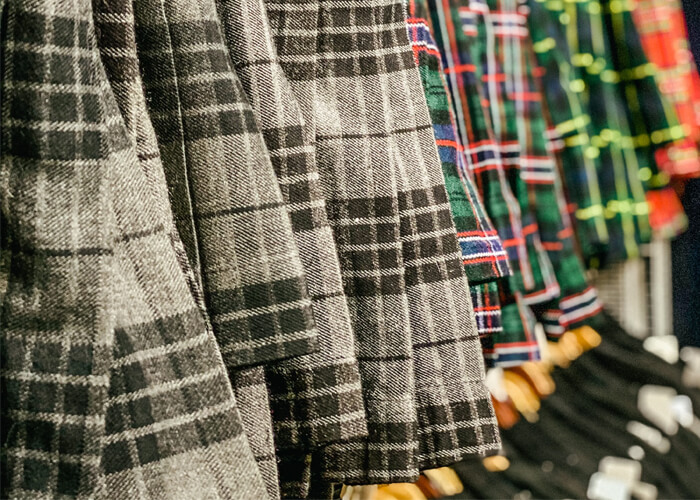
Types of Kilts Available
Traditional Kilts
Traditional kilts hold a special place in the hearts of many, particularly those with a strong connection to Scottish heritage. These kilts are typically made from high-quality wool and feature tartan patterns that are often specific to a particular clan or region. The pleats at the back of the kilt, the deep colors of the tartan, and the overall craftsmanship all contribute to the traditional kilt’s iconic look. Traditional kilts are not just worn as a fashion statement; they are often passed down through generations, serving as a tangible link to one’s ancestry. Because of their significance and the materials used in their construction, traditional kilts can be quite expensive, with prices often ranging from several hundred to over a thousand dollars, depending on the level of customization and the quality of the wool.
-
Product on sale
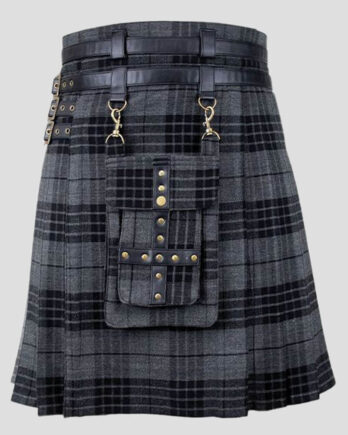 Grey Watch Tartan Utility KiltOriginal price was: $175.$119Current price is: $119.
Grey Watch Tartan Utility KiltOriginal price was: $175.$119Current price is: $119. -
Product on sale
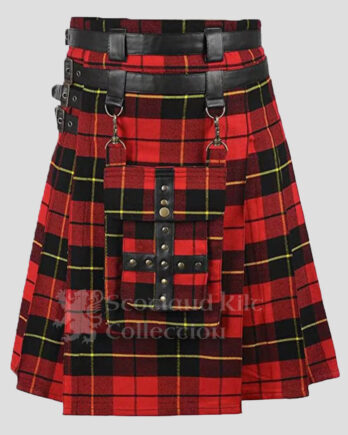 Wallace Tartan Utility Kilt with Front PocketOriginal price was: $175.$119Current price is: $119.
Wallace Tartan Utility Kilt with Front PocketOriginal price was: $175.$119Current price is: $119. -
Product on sale
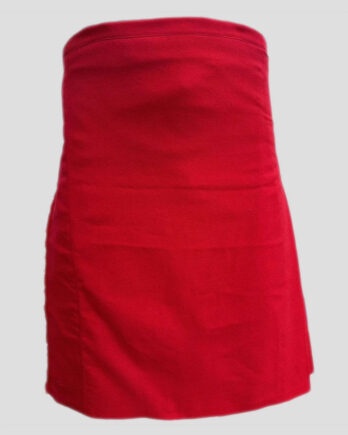 Red Modern Tartan KiltOriginal price was: $342.$159Current price is: $159.
Red Modern Tartan KiltOriginal price was: $342.$159Current price is: $159. -
Product on sale
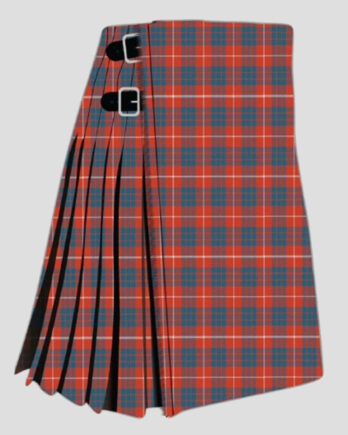 Hamilton Red Modern Heavyweight Tartan KiltOriginal price was: $420.$339Current price is: $339.
Hamilton Red Modern Heavyweight Tartan KiltOriginal price was: $420.$339Current price is: $339. -
Product on sale
 Cassidy Tartan KiltOriginal price was: $436.$339Current price is: $339.
Cassidy Tartan KiltOriginal price was: $436.$339Current price is: $339. -
Product on sale
 Kirkpatrick Tartan KiltOriginal price was: $420.$339Current price is: $339.
Kirkpatrick Tartan KiltOriginal price was: $420.$339Current price is: $339. -
Product on sale
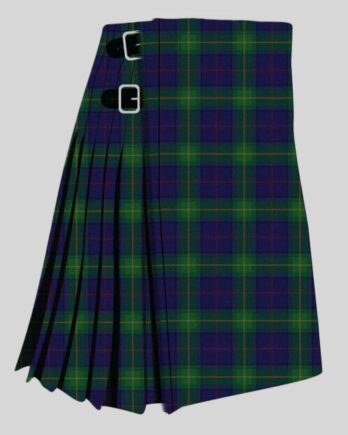 Boyle Tartan KiltOriginal price was: $420.$339Current price is: $339.
Boyle Tartan KiltOriginal price was: $420.$339Current price is: $339. -
Product on sale
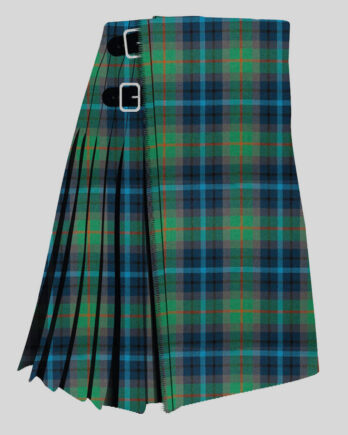 New York City Tartan KiltOriginal price was: $420.$399Current price is: $399.
New York City Tartan KiltOriginal price was: $420.$399Current price is: $399. -
Product on sale
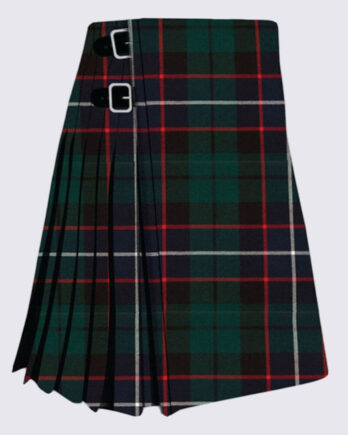 Mitchell Modern Tartan KiltOriginal price was: $420.$339Current price is: $339.
Mitchell Modern Tartan KiltOriginal price was: $420.$339Current price is: $339. -
Product on sale
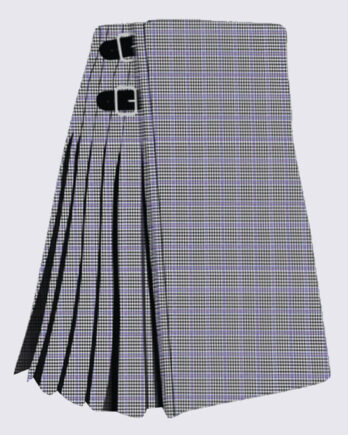 Sir Walter Scott Tartan KiltOriginal price was: $420.$339Current price is: $339.
Sir Walter Scott Tartan KiltOriginal price was: $420.$339Current price is: $339.
One of the main reasons traditional kilts are so costly is the amount of fabric required. A well-made kilt can use up to eight yards of wool, and the weight of the fabric ensures that the kilt drapes beautifully and retains its shape. The tartan pattern must be carefully matched at the seams, a task that requires skill and precision. Additionally, traditional kilts often feature hand-stitched pleats and other customizations, such as embroidered initials or clan crests, which further increase the price. Despite the cost, many people find that investing in a traditional kilt is worth it, particularly if it will be worn for special occasions or passed down as a family heirloom.
Casual Kilts
For those who love the look of a kilt but don’t want to spend a fortune, casual kilts offer an excellent alternative. These kilts are typically made from lighter materials like cotton, polyester, or polyviscose, making them more comfortable for everyday wear. Unlike traditional kilts, which require a significant investment, casual kilts are much more affordable, with prices often starting at around $50 and going up to $200. Casual kilts are ideal for informal settings, such as festivals, parties, or even just a day out on the town. They are also easier to care for than traditional wool kilts, as they can often be machine-washed and don’t require special storage.
-
Product on sale
 Scottish Utility White KiltOriginal price was: $319.$119Current price is: $119.
Scottish Utility White KiltOriginal price was: $319.$119Current price is: $119. -
Product on sale
 Purple & Yellow Fashion Hybrid KiltOriginal price was: $192.$119Current price is: $119.
Purple & Yellow Fashion Hybrid KiltOriginal price was: $192.$119Current price is: $119. -
Product on sale
 Scottish Aqua/Cyan Gothic Utility KiltOriginal price was: $192.$119Current price is: $119.
Scottish Aqua/Cyan Gothic Utility KiltOriginal price was: $192.$119Current price is: $119. -
Product on sale
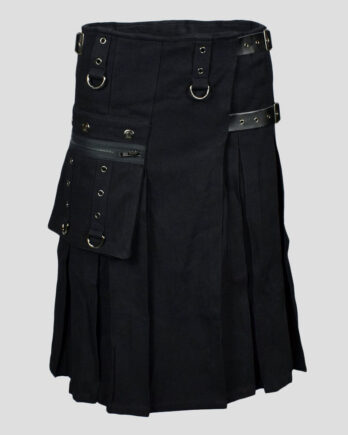 Black Worker Cargo Utility KiltOriginal price was: $192.$119Current price is: $119.
Black Worker Cargo Utility KiltOriginal price was: $192.$119Current price is: $119. -
Product on sale
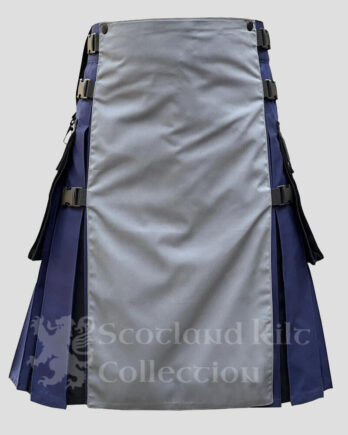 Blue Utility Kilt with Grey Front ApronOriginal price was: $192.$119Current price is: $119.
Blue Utility Kilt with Grey Front ApronOriginal price was: $192.$119Current price is: $119. -
Product on sale
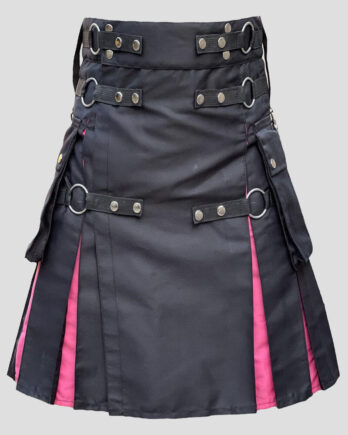 Scottish Black Utility Kilt with Pink PleatsOriginal price was: $192.$119Current price is: $119.
Scottish Black Utility Kilt with Pink PleatsOriginal price was: $192.$119Current price is: $119. -
Product on sale
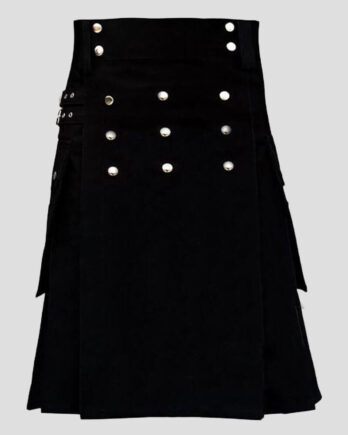 Men’s Black Fashion Utility KiltOriginal price was: $146.$109Current price is: $109.
Men’s Black Fashion Utility KiltOriginal price was: $146.$109Current price is: $109. -
Product on sale
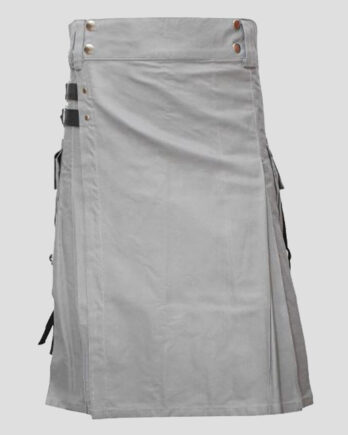 Men’s Grey Utility Kilt with Nylon StrapsOriginal price was: $146.$109Current price is: $109.
Men’s Grey Utility Kilt with Nylon StrapsOriginal price was: $146.$109Current price is: $109. -
Product on sale
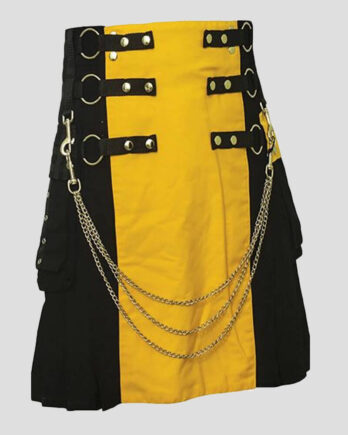 Black and Yellow Gothic Utility KiltOriginal price was: $146.$109Current price is: $109.
Black and Yellow Gothic Utility KiltOriginal price was: $146.$109Current price is: $109. -
Product on sale
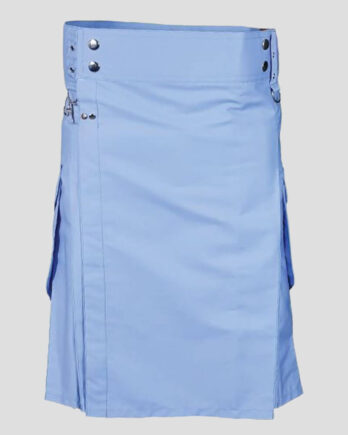 Light Blue Cargo Utility KiltOriginal price was: $130.$109Current price is: $109.
Light Blue Cargo Utility KiltOriginal price was: $130.$109Current price is: $109.
One of the advantages of casual kilts is their versatility. They come in a wide range of colors and patterns, including non-tartan options, which allows for greater personalization and style flexibility. Some casual kilts are even designed with modern features, such as pockets or belt loops, that make them more practical for everyday use. While they may not have the same historical significance or durability as traditional kilts, casual kilts are a great option for those who want to enjoy the style and comfort of a kilt without the hefty price tag. They also offer a more contemporary look, which can appeal to younger generations or those who want to put a modern twist on the classic kilt.
Hybrid Kilts
Hybrid kilts are an innovative blend of traditional and modern styles, designed for those who want the best of both worlds. These kilts often feature the pleating and tartan patterns of traditional kilts, but they are made from more durable and practical materials, such as cotton or canvas. Hybrid kilts are popular among those who enjoy outdoor activities, as they offer the comfort and freedom of movement needed for hiking, camping, or other rugged pursuits. Prices for hybrid kilts can vary widely, depending on the materials used and the level of customization, but they generally fall in the mid-range category, with prices ranging from $100 to $400.
What sets hybrid kilts apart is their functionality. Many hybrid kilts come with modern features, such as cargo pockets, adjustable waistbands, and reinforced stitching, making them both stylish and practical. They are designed to withstand the wear and tear of outdoor activities, while still maintaining the distinctive look of a kilt. This makes them a popular choice for those who want a kilt that can be worn in a variety of settings, from casual outings to outdoor adventures. Hybrid kilts also offer more flexibility in terms of customization, with many brands allowing customers to choose their preferred tartan, fabric, and features. While they may not have the same level of historical authenticity as traditional kilts, hybrid kilts offer a unique and modern take on the classic garment.
-
Product on sale
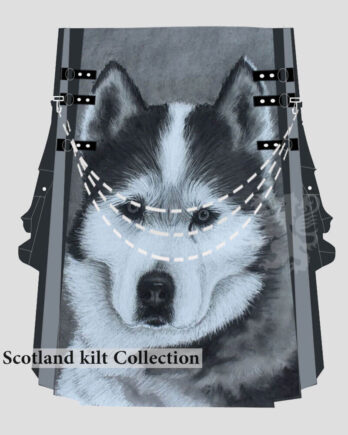 Husky Dog Print Hybrid KiltOriginal price was: $389.$169Current price is: $169.
Husky Dog Print Hybrid KiltOriginal price was: $389.$169Current price is: $169. -
Product on sale
 Spider-Man Hybrid KiltOriginal price was: $389.$159Current price is: $159.
Spider-Man Hybrid KiltOriginal price was: $389.$159Current price is: $159. -
Product on sale
 LGBT Gay Pride Rainbow Hybrid KiltOriginal price was: $319.$129Current price is: $129.
LGBT Gay Pride Rainbow Hybrid KiltOriginal price was: $319.$129Current price is: $129. -
Product on sale
 Scottish Utility White KiltOriginal price was: $319.$119Current price is: $119.
Scottish Utility White KiltOriginal price was: $319.$119Current price is: $119. -
Product on sale
 Blue Utility Kilt with Grey Front ApronOriginal price was: $192.$119Current price is: $119.
Blue Utility Kilt with Grey Front ApronOriginal price was: $192.$119Current price is: $119. -
Product on sale
 Scottish Black Utility Kilt with Pink PleatsOriginal price was: $192.$119Current price is: $119.
Scottish Black Utility Kilt with Pink PleatsOriginal price was: $192.$119Current price is: $119. -
Product on sale
 Men’s Black Fashion Utility KiltOriginal price was: $146.$109Current price is: $109.
Men’s Black Fashion Utility KiltOriginal price was: $146.$109Current price is: $109. -
Product on sale
 Men’s Grey Utility Kilt with Nylon StrapsOriginal price was: $146.$109Current price is: $109.
Men’s Grey Utility Kilt with Nylon StrapsOriginal price was: $146.$109Current price is: $109. -
Product on sale
 Black and Yellow Gothic Utility KiltOriginal price was: $146.$109Current price is: $109.
Black and Yellow Gothic Utility KiltOriginal price was: $146.$109Current price is: $109. -
Product on sale
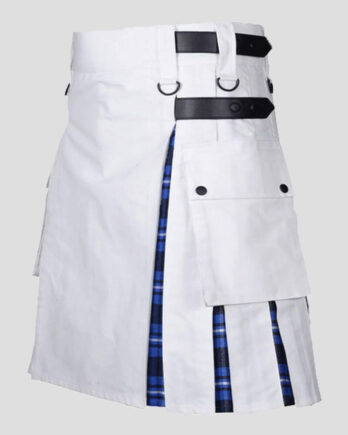 Men’s White Cotton Utility Hybrid KiltOriginal price was: $167.$119Current price is: $119.
Men’s White Cotton Utility Hybrid KiltOriginal price was: $167.$119Current price is: $119.
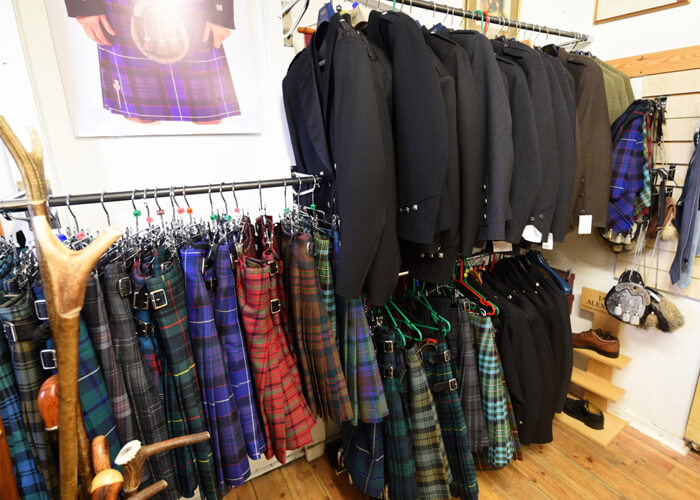
Factors Influencing Kilt Prices
Material Quality: Wool vs. Synthetic Options
The material of a kilt is perhaps the most significant factor influencing its price. Traditional kilts are typically made from high-quality wool, which has been the fabric of choice for centuries due to its durability, warmth, and ability to hold pleats. Wool kilts are often considered the gold standard, and the use of pure new wool or worsted wool can drive up the price significantly. Wool kilts also come in various weights, ranging from lightweight options for summer wear to heavier fabrics that are more suitable for colder climates. The craftsmanship involved in working with wool, from weaving the tartan to hand-stitching the pleats, adds to the cost, making wool kilts one of the more expensive options on the market. However, for those who value authenticity, tradition, and the unique texture of wool, the investment in a high-quality wool kilt is often well worth it.
On the other hand, synthetic materials like polyester, acrylic, and polyviscose have become increasingly popular, particularly for casual and budget-friendly kilts. These materials are cheaper to produce and easier to care for, making them a practical choice for those who want the look of a kilt without the high price tag. Synthetic kilts are often lighter and more comfortable for everyday wear, and they require less maintenance than wool kilts, as they can usually be machine-washed. However, they may not have the same level of durability or the rich texture that wool provides, and some purists may feel that synthetic kilts lack the authenticity of traditional woolen garments. Nonetheless, for those on a budget or looking for a more casual option, synthetic kilts offer a cost-effective alternative without compromising too much on style.
Customization Features: Tartans, Pleats, and Linings
Customization is another critical factor that can greatly affect the price of a kilt. Traditional kilts are often made with specific tartans that represent a family, clan, or region, and the choice of tartan can influence the cost. Some tartans are rarer or more complex to weave, and these factors can drive up the price. Additionally, custom kilts that are made-to-measure, rather than off-the-rack, will naturally be more expensive due to the personalized attention and craftsmanship involved. The number and style of pleats also play a role in pricing. Box pleats, knife pleats, and military pleats each require different amounts of fabric and labor, with deeper or more complex pleats often costing more. The amount of fabric needed to create a full, flowing kilt with well-defined pleats can significantly add to the overall cost, particularly if the kilt is made from high-quality wool.
Another aspect of customization that impacts pricing is the lining and additional features of the kilt. A fully-lined kilt will generally be more expensive than an unlined one, as the lining adds to the comfort and structure of the garment. High-end kilts may also include additional details, such as embroidered initials, clan crests, or special finishes on the fabric. These personalized touches, while adding to the uniqueness of the kilt, also increase the time and skill required to make it, resulting in higher prices. For those looking to invest in a kilt that reflects their heritage or style, the cost of customization can be a worthwhile investment, ensuring that the kilt is not only a functional piece of clothing but also a meaningful and long-lasting symbol of identity.
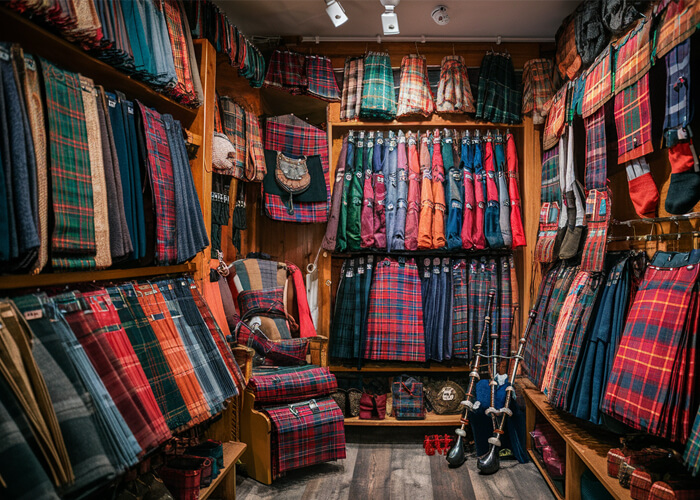
Budget-Friendly Kilt Options
Affordable Brands for Entry-Level Buyers
For those new to the world of kilts or on a tight budget, several brands offer affordable, entry-level options without sacrificing too much in terms of quality and style. These kilts are often made from synthetic materials or lighter fabrics, which help keep costs down while still providing a good-looking garment that can be worn for casual occasions or events. Brands such as Scotland Kilt Collection, Heritage of Scotland, and Sport Kilt offer a range of affordable options, with prices typically starting around $50 to $100. These kilts may not have the same level of craftsmanship or durability as their higher-end counterparts, but they are a great way to dip your toes into the kilt-wearing experience without making a significant financial commitment.
Another budget-friendly option is to consider second-hand kilts or renting a kilt for a special occasion. Many online marketplaces and local stores offer pre-owned kilts at a fraction of the cost of new ones, and with a little searching, you can often find high-quality wool kilts that have been gently worn but still have plenty of life left in them. Renting a kilt is another cost-effective solution, especially if you need it for a one-time event like a wedding or a cultural festival. Rental services typically provide a full kilt outfit, including accessories, for a reasonable fee, allowing you to enjoy the experience of wearing a kilt without a long-term financial commitment. Whether you’re looking to buy or rent, there are plenty of options available that cater to budget-conscious buyers who still want to enjoy the unique style and cultural significance of a kilt.
Tips for Second-Hand Shopping or Renting a Kilt
When shopping for a second-hand kilt, it’s essential to pay attention to a few key details to ensure you’re getting a good deal. First, check the material and craftsmanship of the kilt. Wool kilts tend to hold up well over time, but it’s still important to inspect for any signs of wear, such as fraying, stains, or damage to the pleats. Ask the seller about the history of the kilt, including how it was stored and cared for, as proper maintenance can significantly extend the life of a kilt. Additionally, make sure to verify the size and measurements, as kilts are often tailored to the individual, and alterations may be necessary to achieve a proper fit. If you’re buying online, look for sellers with good reviews and ask for detailed photos or descriptions of the kilt’s condition.
Renting a kilt can be a convenient and budget-friendly option, especially for those who need a kilt for a specific event but don’t plan on wearing it regularly. Most rental services offer a range of kilt styles and sizes, along with accessories like sporrans, belts, and shoes, allowing you to complete the entire outfit without the expense of buying everything outright. When renting, it’s important to book your kilt well in advance of your event, as availability can be limited during peak seasons like wedding season or cultural festivals. Additionally, make sure to try on the kilt before the event to ensure a good fit, and ask the rental service about any additional fees or policies regarding damage or late returns. By considering second-hand and rental options, you can enjoy the experience of wearing a kilt without stretching your budget too thin.
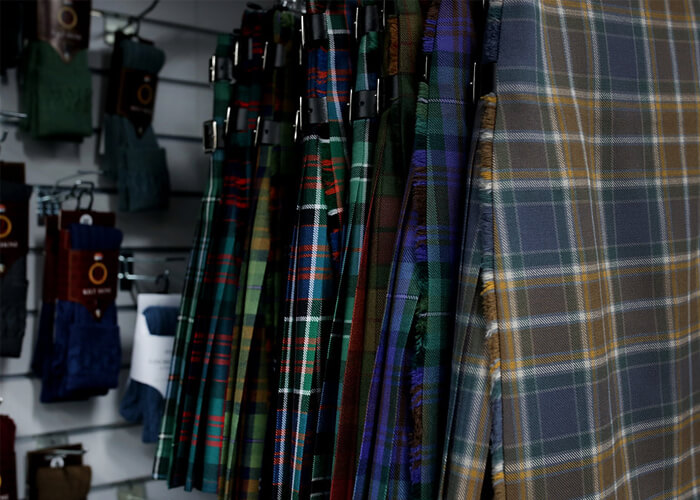
Mid-Range Kilt Selections
Recognized Brands Offering Quality Without Breaking the Bank
For those who are willing to spend a bit more for a kilt that balances quality and affordability, several mid-range brands offer excellent value for the price. Brands like USA Kilts, Stillwater Kilts, and Scotweb provide a range of kilts that are crafted with higher-quality materials and better attention to detail than entry-level options, yet remain accessible to those with moderate budgets. These kilts are often made from wool blends or lighter-weight wool, offering a good compromise between traditional style and modern practicality. Prices for mid-range kilts typically range from $150 to $400, depending on the brand, materials, and level of customization.
One of the key advantages of mid-range kilts is the improved craftsmanship and durability compared to budget options. These kilts are often made with better stitching, more accurate tartan patterns, and a higher level of attention to detail, ensuring that they not only look good but also stand the test of time. Additionally, mid-range brands often offer more options for customization, allowing you to choose your preferred tartan, or pleat style, and even add personalized touches like embroidery or unique linings. While these kilts may not have the same level of luxury as high-end options, they provide a great balance of quality and affordability, making them an excellent choice for those who want a kilt that can be worn regularly without breaking the bank.
Key Features That Justify Mid-Range Prices
When investing in a mid-range kilt, it’s important to understand the features that justify the higher price compared to budget options. One of the most significant factors is the quality of the materials used. Mid-range kilts are often made from wool blends or lighter-weight wool, which offers a better drape and feel than synthetic materials. The use of higher-quality fabrics not only improves the overall look of the kilt but also increases its durability, ensuring that it can withstand regular wear and tear. Additionally, mid-range kilts often feature better craftsmanship, with more precise stitching, carefully matched tartan patterns and well-defined pleats. These details may seem small, but they make a big difference in the overall appearance and longevity of the kilt.
Another feature that sets mid-range kilts apart is the level of customization available. While budget kilts often come in standard sizes and limited tartan options, mid-range kilts typically offer more flexibility in terms of fit and design. Many brands allow you to choose your preferred tartan, or pleat style, and even add personalized touches like embroidered initials or custom linings. These options allow you to create a kilt that reflects your style and heritage, making it a more meaningful and enjoyable garment to wear. For those who want a kilt that offers a good balance of quality, style, and affordability, mid-range options provide the perfect solution, offering the best of both worlds.
High-End Kilts: Luxury Choices for Special Occasions
Handcrafted vs. Mass-Produced: What to Expect in Quality
When it comes to high-end kilts, the difference in quality is immediately apparent, and it often comes down to whether the kilt is handcrafted or mass-produced. Handcrafted kilts are the epitome of luxury, made by skilled artisans who take great pride in their craft. These kilts are often made from the finest materials, such as heavyweight worsted wool, and are custom-made to fit the wearer perfectly. The attention to detail in handcrafted kilts is unmatched, with perfectly aligned tartan patterns, expertly sewn pleats, and intricate stitching that ensures the kilt not only looks stunning but also lasts for generations. Handcrafted kilts are typically made in small quantities or even as one-of-a-kind pieces, making them a truly unique and special investment for those who want the best of the best.
On the other hand, mass-produced high-end kilts can also offer excellent quality, though they may not have the same level of craftsmanship as their handcrafted counterparts. These kilts are often made by reputable brands that have established a reputation for quality, using high-end materials and advanced manufacturing techniques to produce kilts that are durable and stylish. While mass-produced kilts may lack the personal touch of a handcrafted garment, they can still offer a luxurious experience, particularly if they are made from premium materials and come with customization options. For those who want a high-quality kilt but may not have the time or budget for a fully bespoke garment, mass-produced high-end kilts provide a more accessible option without sacrificing too much in terms of quality or style.
Price Tags: What Makes High-End Kilts Worth the Investment
The price of high-end kilts can vary widely, but they are generally considered a significant investment, with prices ranging from $500 to several thousand dollars. Several factors contribute to the high cost of these kilts, starting with the materials. High-end kilts are often made from the finest fabrics, such as heavyweight worsted wool, cashmere, or even rare tartan patterns that are difficult to source. The use of premium materials ensures that the kilt has a luxurious feel and appearance, as well as the durability to last for many years with proper care. Additionally, the craftsmanship involved in making a high-end kilt adds to the price. Handcrafted kilts, in particular, require a great deal of skill and time to create, with each pleat carefully sewn and each tartan pattern meticulously matched.
Another factor that contributes to the price of high-end kilts is the level of customization and personalization available. Many luxury kilts are made to measure, ensuring a perfect fit for the wearer. This level of customization often includes the ability to choose from a wide range of tartans, pleat styles, linings, and even additional features like embroidery or custom buckles. The result is a kilt that is truly unique and tailored to the individual’s preferences, making it a one-of-a-kind garment that reflects the wearer’s style and heritage. For those who value quality, craftsmanship, and personalization, the investment in a high-end kilt is often seen as well worth the cost, providing a timeless and elegant piece of clothing that can be worn for special occasions or passed down as a cherished heirloom.
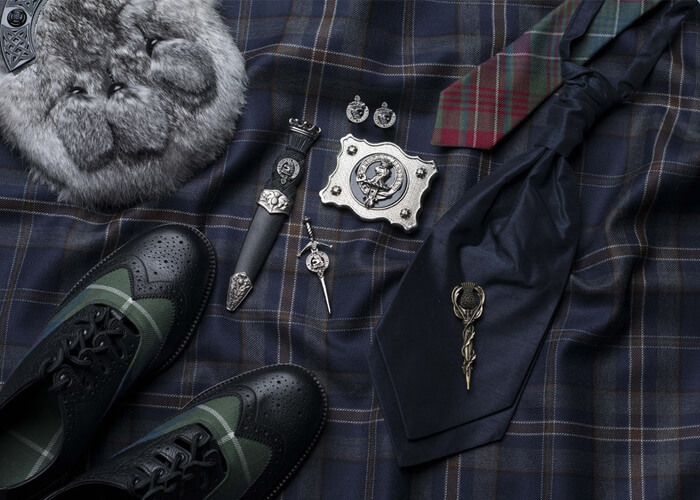
Accessories and Complements to Complete Your Kilt Outfit
The Essential Sporran: Function Meets Tradition
No kilt outfit is truly complete without the sporran, a small pouch traditionally worn in front of the kilt. Sporrans serve both functional and aesthetic purposes, acting as a practical solution to the lack of pockets in kilts while also adding a decorative element to the outfit. The sporran’s design can vary greatly, ranging from simple leather pouches for casual wear to intricately adorned fur sporrans with silver or pewter detailing for formal occasions. The choice of sporran often depends on the occasion and the level of formality required. For instance, a day sporran made of plain leather might be appropriate for a casual event or everyday wear, while a more elaborate dress sporran, often featuring fur and metalwork, is better suited for formal events like weddings or highland gatherings.
The price of a sporran can vary widely depending on the materials and craftsmanship involved. Simple leather sporrans can be relatively affordable, starting at around $50, while high-end dress sporrans with intricate detailing can cost several hundred dollars. The investment in a good sporran is worthwhile for those who want to complete their kilt outfit with a touch of tradition and functionality. Additionally, sporrans are often considered heirloom items, passed down through generations, making them a meaningful addition to any kilt wardrobe. When selecting a sporran, it’s essential to consider not only the style and design but also the practicality, as the sporran is likely to be used to carry essentials such as a wallet, keys, or other small items.
Footwear Choices: Brogues, Boots, and Beyond
Footwear is another crucial element of a kilt outfit, and the right shoes can elevate the entire look. Traditional kilt shoes are known as ghillie brogues, characterized by their open lacing and long laces that are wrapped around the ankles. These shoes are typically made of leather and are designed to complement the formality and style of the kilt. Ghillie brogues are a popular choice for formal events, such as weddings or ceremonial occasions, where they add a touch of elegance and tradition to the outfit. However, they can also be worn for more casual events, especially when paired with lighter or more modern kilts.
For those seeking a more rugged or casual look, boots can also be a great choice to pair with a kilt. Leather boots, especially those with a slightly worn or distressed finish, can give a kilt outfit a more contemporary, edgy feel. This style is often seen at outdoor events, music festivals, or casual gatherings where a traditional look might feel too formal. Combat boots or hiking boots are also popular choices for kilt wearers who prefer a more functional and comfortable option, particularly for events that involve a lot of walking or standing.
When selecting footwear to pair with a kilt, it’s important to consider the level of formality, the event, and personal style preferences. High-quality shoes or boots can be a worthwhile investment, as they not only complete the kilt outfit but also provide comfort and durability. Whether opting for traditional ghillie brogues or more modern footwear, the right shoes can significantly enhance the overall look and feel of the kilt ensemble.
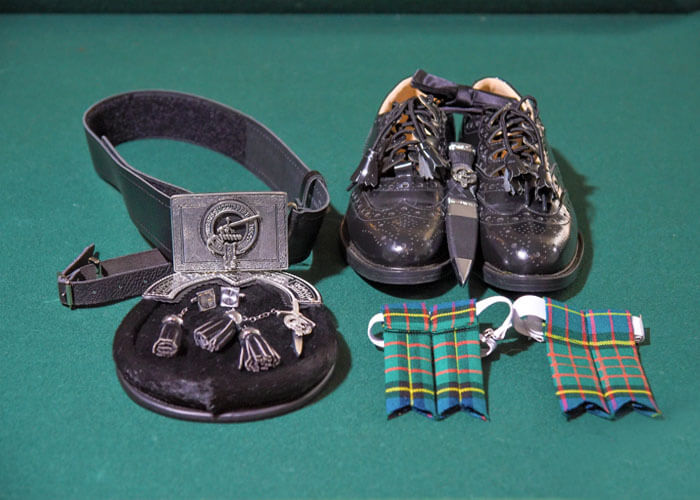
Kilt Accessories: Belts, Buckles, and More
In addition to the sporran and footwear, several other accessories can enhance a kilt outfit. One of the most important is the kilt belt and buckle. Kilt belts are typically wider than regular belts, often made of leather, and feature decorative buckles that can range from simple designs to elaborate Celtic knots or clan crests. The belt not only adds a layer of visual interest to the outfit but also helps to secure the kilt in place, ensuring a comfortable and secure fit. Belts and buckles are available in various styles and price ranges, making it easy to find an option that suits your taste and budget.
Another popular accessory is the kilt pin, a decorative piece that is traditionally worn on the lower right corner of the kilt. The kilt pin serves both a functional and aesthetic purpose, adding weight to the front apron of the kilt to prevent it from blowing open while also providing an opportunity for personal expression. Kilt pins come in a wide range of designs, from simple metal bars to intricate symbols representing Scottish heritage, such as thistles, swords, or clan crests. The choice of kilt pin can reflect the wearer’s style or heritage, making it a meaningful addition to the outfit.
Finally, for formal occasions, a jacket and waistcoat (vest) are often worn with a kilt to create a polished and complete look. Prince Charlie jackets and waistcoats are the most traditional and formal option, often worn with dress kilts for weddings or black-tie events. However, other jacket styles, such as the less formal Argyll jacket, can also be worn, depending on the occasion. These jackets are usually made of wool and feature distinctive details like epaulets, buttons, and braided trim, adding a touch of sophistication to the kilt outfit.
Accessories are a vital part of a kilt ensemble, allowing wearers to personalize their outfits and add layers of tradition, style, and function. Whether dressing for a formal event or a casual gathering, the right accessories can make all the difference in creating a complete and polished kilt outfit.
Conclusion: Balancing Budget with Style
Choosing the right kilt and accessories is a journey that blends tradition, personal style, and practicality. Whether you are looking for a budget-friendly option, a mid-range kilt that balances quality with cost, or a luxury handcrafted piece for a special occasion, there is a wide range of options available to suit every need and preference. By understanding the factors that influence kilt prices, such as material quality, customization features, and craftsmanship, you can make an informed decision that aligns with your budget and style.
Accessories like sporrans, footwear, belts, and kilt pins add the finishing touches to your outfit, enhancing both its functionality and appearance. Investing in quality accessories that complement your kilt can elevate the entire ensemble, making it suitable for a variety of occasions, from casual gatherings to formal events.
Ultimately, the key to finding the perfect kilt is to balance your budget with your desired level of style and tradition. Whether you’re purchasing your first kilt or adding to your collection, taking the time to research your options and consider your needs will ensure that you make a choice that you’ll be proud to wear for years to come. Whether you’re drawn to the timeless elegance of a traditional wool kilt or prefer the modern convenience of synthetic materials, there’s a kilt out there that perfectly matches your unique style and heritage.
Frequently Asked Questions (FAQs)
The price of a quality kilt can vary widely depending on factors such as the material, craftsmanship, and customization options. Budget-friendly kilts can start as low as $50 to $100, often made from synthetic materials or mass-produced. Mid-range kilts, which offer better materials and construction, typically cost between $200 and $400. High-end, custom-made kilts made from premium wool and tailored to your measurements can range from $500 to over $1,000. The key is to balance your budget with your desired level of quality and style.
A traditional kilt is usually made from high-quality wool and features a classic tartan pattern, with pleats, a sporran, and other traditional accessories. These kilts are often worn for formal occasions, such as weddings or ceremonies, and are known for their durability and timeless appeal. Casual kilts, on the other hand, are designed for everyday wear and may be made from lighter or synthetic materials. They often have simpler designs and are more affordable, making them a great option for those looking for a kilt that’s easy to wear for casual or informal events.
Yes, renting a kilt is a popular option, especially for special occasions like weddings, graduations, or formal events where you may not need to wear a kilt regularly. Kilt rentals typically include the full outfit, including the kilt, jacket, sporran, and accessories. Rental prices can range from $50 to $150, depending on the quality of the kilt and the accessories included. Renting can be a cost-effective way to enjoy wearing a high-quality kilt without the commitment of purchasing one.
Choosing the right tartan pattern often depends on personal preference, heritage, or the occasion for which you’ll be wearing the kilt. Many people select a tartan that represents their Scottish clan or family history. However, there are also universal tartans that anyone can wear, as well as modern or fashionable tartans that may appeal to your sense of style. When selecting a tartan, consider the colors and patterns that resonate with you and fit the occasion. If you’re unsure, consulting with a kilt maker or doing some research on tartan history can help guide your decision.
Proper measurements are crucial for ensuring a comfortable and well-fitting kilt. You’ll need to take three main measurements: your waist, hips, and kilt length. The waist measurement should be taken around your natural waist, where the kilt will sit. The hip measurement is taken around the widest part of your hips. The kilt length is measured from your waist down to the middle of your knee. It’s important to take these measurements carefully and, if possible, have someone assist you. If you’re ordering a custom kilt online, follow the retailer’s measuring guide closely to ensure accuracy.
To complete your kilt outfit, you’ll need a few essential accessories, including a sporran, kilt hose (socks), ghillie brogues (shoes), and a kilt belt with a buckle. A kilt pin is also a common addition to secure the front apron of the kilt. For more formal occasions, you may also want to include a jacket and waistcoat, such as a Prince Charlie or Argyll jacket. Depending on the event and your style, additional accessories like a sgian-dubh (a small knife worn in the sock) or a fly plaid (a decorative tartan drape) can add extra flair to your outfit.



